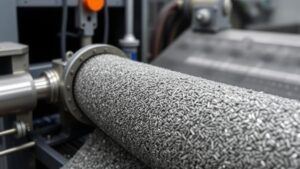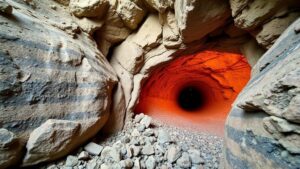Analyzing Gold Flake Distribution in Layered Sediment
Analyzing Gold Flake Distribution in Layered Sediment
The study of gold flake distribution in layered sediment plays a pivotal role in numerous fields, including geology, mineralogy, and economic geology. Understanding how these gold flakes are distributed can provide insights into past geological processes and inform present-day mining practices. This article examines the methods of analysis, the significance of findings, and real-world applications of this research.
Understanding Gold Flake Formation
Gold flakes are typically formed through natural processes such as erosion and sedimentation which facilitate their separation from host rocks. behavior of gold during these processes is largely influenced by its density and chemical properties. Gold, being one of the heaviest metals, tends to settle in specific environments.
Factors affecting the formation and distribution of gold flakes include:
- The size and shape of the gold particles.
- The characteristics of the sedimentary environment.
- Hydraulic sorting during sediment transport.
Methods of Analysis
Multiple techniques are employed to analyze gold flake distribution, each offering distinct insights into sediment characteristics and mineral composition. Some of the most common methods include:
- Field Sampling: Researchers collect sediment samples from multiple stratigraphic layers to analyze gold content.
- Geochemical Analysis: Techniques such as X-ray fluorescence (XRF) and scanning electron microscopy (SEM) can identify and quantify gold concentrations in sediment layers.
- Statistical Modeling: Software tools analyze spatial distribution and demonstrate correlations between gold occurrence and various sedimentary factors.
Case Studies and Real-World Applications
Analyzing gold flake distribution has profound implications in various practical realms. Notable case studies include:
- The Klondike Gold Rush: Analysis of layered sediments in the Klondike River area provided crucial insights into gold concentration and distribution, influencing mining techniques used during the era.
- Modern Gold Exploration: Companies utilizing sediment analysis often discover new mining sites by understanding sedimentary patterns which indicate potential gold deposits.
For example, a recent study in Alaska analyzed sediment samples from glacial deposits, revealing a higher concentration of gold flakes in specific stratified layers. This knowledge directly contributed to targeted exploration efforts, increasing the likelihood of economically viable mining operations.
Challenges in Analyzing Gold Distribution
While the techniques and methodologies have evolved, researchers still face challenges including:
- Complex Sedimentary Structures: Layered sediments can vary significantly, complicating the interpretation of gold distribution.
- Environmental Factors: Natural disasters such as floods or human impacts can alter sediment distribution, skewing analysis results.
Addressing these challenges often requires an interdisciplinary approach, combining geology, engineering, and data analysis to provide comprehensive insights.
Conclusion and Actionable Takeaways
Analyzing gold flake distribution in layered sediment is not merely an academic exercise; it has practical applications in mining, geology, and environmental science. Employing a range of analytical techniques allows researchers to construct a more complete picture of sedimentary environments and gold distribution patterns.
As a takeaway, professionals in geology and mining can consider the following steps for effective analysis:
- Use multi-faceted analytical techniques to gain a more comprehensive understanding of sediment and gold distribution.
- Regularly update field methodologies to incorporate advancements in technology and analysis.
- Collaborate with interdisciplinary teams to enhance the interpretive framework surrounding sediment analysis.
Integrating these strategies can enhance the efficacy of gold exploration and improve decision-making processes in related fields.


